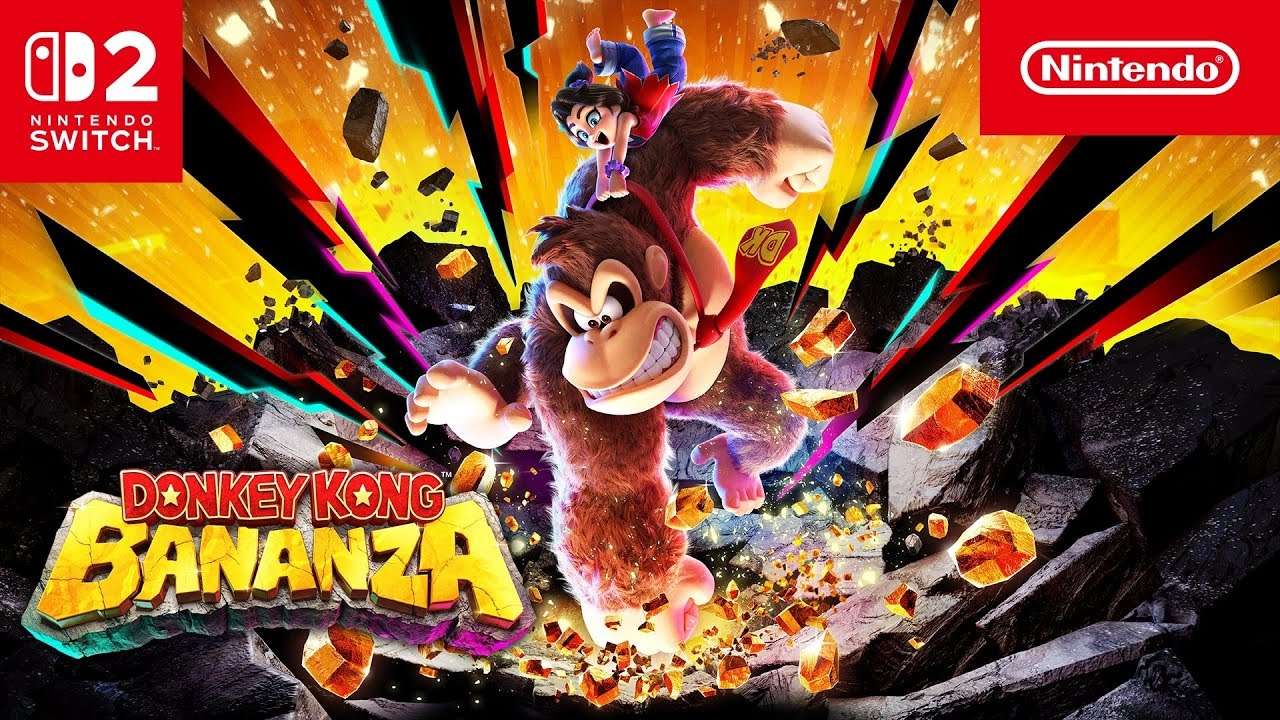Donkey Kong Bananza DLC: Unmasking the Nintendo Switch 2’s Critical Performance and Monetization Blunder
Popular Now
 The gaming world has been abuzz with anticipation for the arrival of the Nintendo Switch 2, a console poised to redefine portable and home gaming. Expectations were sky-high, particularly concerning its graphical prowess and the promise of a seamless player experience. Among the most talked-about launch-window offerings was the highly anticipated Donkey Kong Bananza DLC, an expansion poised to showcase the console’s capabilities. However, recent developments surrounding this flagship downloadable content have cast a long shadow, revealing what many industry analysts are now calling a fatal flaw in Nintendo’s next-generation strategy.
The gaming world has been abuzz with anticipation for the arrival of the Nintendo Switch 2, a console poised to redefine portable and home gaming. Expectations were sky-high, particularly concerning its graphical prowess and the promise of a seamless player experience. Among the most talked-about launch-window offerings was the highly anticipated Donkey Kong Bananza DLC, an expansion poised to showcase the console’s capabilities. However, recent developments surrounding this flagship downloadable content have cast a long shadow, revealing what many industry analysts are now calling a fatal flaw in Nintendo’s next-generation strategy.
Initial previews and hands-on impressions of the Donkey Kong Bananza DLC have brought to light a series of troubling performance inconsistencies and a questionable monetization model that threatens to undermine the entire Nintendo Switch 2 ecosystem. While the visual upgrade from its predecessor is undeniable, especially in its vibrant jungle environments and character models, the DLC appears to push the hardware to its very limits, resulting in noticeable frame rate dips and an unexpected lack of the butter-smooth gameplay fluidity that defines Nintendo’s platforming staples. This isn’t merely a minor hitch; it’s a significant detractor from the immersive gaming experience that consumers expect from a premium next-gen device.
The Performance Conundrum: A Glimpse into Hardware Limitations
For months, rumors of the Switch 2’s hardware specifications painted a picture of a console capable of bridging the gap between current-gen performance and Nintendo’s unique hybrid design philosophy. The Donkey Kong Bananza DLC, with its ambitious new levels, detailed particle effects, and expanded enemy encounters, was supposed to be a testament to this power. Instead, it has inadvertently become a benchmark that exposes potential hardware limitations.
Reports from early testers and select media outlets indicate that during graphically intensive moments, particularly in scenarios with multiple on-screen enemies and dynamic environmental interactions, the frame rate can plummet below a consistent 30 frames per second. While some may argue that such occasional dips are tolerable, for a title as crucial as Donkey Kong Bananza – a brand known for its precise platforming – these fluctuations directly impact gameplay responsiveness and player enjoyment. This raises serious questions about the console’s ability to handle other visually demanding launch titles or future third-party releases without significant software optimization sacrifices.
Furthermore, the targeted resolution, while improved over the original Switch, still falls short of competitor handhelds and struggles to maintain consistency when docked. Dynamic resolution scaling is employed aggressively, leading to a noticeable blurring in certain areas, particularly when output to larger screens. This undermines the promise of a truly “next-gen” visual leap, suggesting that Nintendo may have prioritized cost-effectiveness or battery life over raw graphical horsepower, a decision that could haunt them in the increasingly competitive gaming industry.
 Monetization Misfire: The High Cost of Bananza
Monetization Misfire: The High Cost of Bananza
Beyond the technical hurdles, the Donkey Kong Bananza DLC also introduces a monetization strategy that has ignited a fiery debate within the gaming community. Priced at a premium, significantly higher than typical Nintendo DLC offerings, the expansion package also includes an array of in-game purchases for cosmetic items and minor convenience boosts. While DLC pricing and microtransactions are common in modern gaming, the combination of a high upfront cost for the expansion itself, coupled with additional pathways for spending, feels incongruous with Nintendo’s traditional, player-friendly approach.
Critics argue that this aggressive monetization model for a first-party exclusive content offering sets a worrying precedent for the Nintendo Switch 2. Players are already investing in a new console and often a full-priced base game; expecting them to then shell out substantial sums for an expansion that doesn’t consistently deliver on performance promises could lead to significant player resentment. This strategy could alienate loyal fans and deter new consumers who are wary of predatory microtransaction practices, directly impacting potential console sales and long-term engagement.
- High Premium Price Tag: The DLC’s base price is considerably steeper than anticipated.
- In-game Cosmetic Purchases: Further monetization through outfits and character animations.
- Optional Convenience Boosts: Debatable advantages that lean into ‘pay-to-progress’ concerns.
- Impact on Player Trust: Potential erosion of goodwill established by Nintendo’s traditional value proposition.
Industry Implications and Nintendo’s Path Forward
The revelations surrounding the Donkey Kong Bananza DLC are not just a setback for one game; they represent a significant challenge to the perception and potential success of the Nintendo Switch 2. In a market where competitors like Sony and Microsoft are pushing the boundaries of high-fidelity graphics and comprehensive online services, Nintendo’s reliance on unique gameplay experiences must now contend with performance expectations that are higher than ever.
Developers working on Switch 2 titles will undoubtedly be scrutinizing these early reports. The perceived development challenges posed by optimizing for the new hardware, coupled with a potentially player-unfriendly monetization strategy, might make some third-party publishers hesitant to fully commit their most ambitious projects to the platform. This could limit the diversity and quality of the Nintendo Switch 2’s game library, a crucial factor in attracting a broad audience.
Nintendo now faces a critical juncture. Addressing the performance concerns through rigorous software optimization via future patches will be paramount. Equally important will be a re-evaluation of their DLC pricing and microtransaction policies, perhaps offering more value or clarity to restore player trust. The success of the Switch 2 hinges not just on its initial sales, but on its ability to sustain a vibrant ecosystem of games that respect both player wallets and technical expectations.
 Conclusion: A Cautious Outlook for the Switch 2
Conclusion: A Cautious Outlook for the Switch 2
While the Donkey Kong Bananza DLC was intended to be a celebratory showcase for the Nintendo Switch 2, its premature unveiling of performance limitations and an aggressive monetization scheme has inadvertently revealed a potential Achilles’ heel. This gaming news serves as a crucial early warning. Nintendo has a history of innovating and adapting, but the competitive landscape of the gaming industry has never been more demanding. The company must act swiftly and decisively to reaffirm its commitment to delivering unparalleled player experience and value, or risk seeing its highly anticipated next-gen console stumble out of the gate.
The coming months will be critical in determining whether these initial flaws are mere teething problems or fundamental issues that could dictate the future of gaming on Nintendo’s latest hardware. For now, the hype train for the Nintendo Switch 2 has encountered its first significant stop, leaving many in the gaming community with a mixture of excitement and palpable concern.